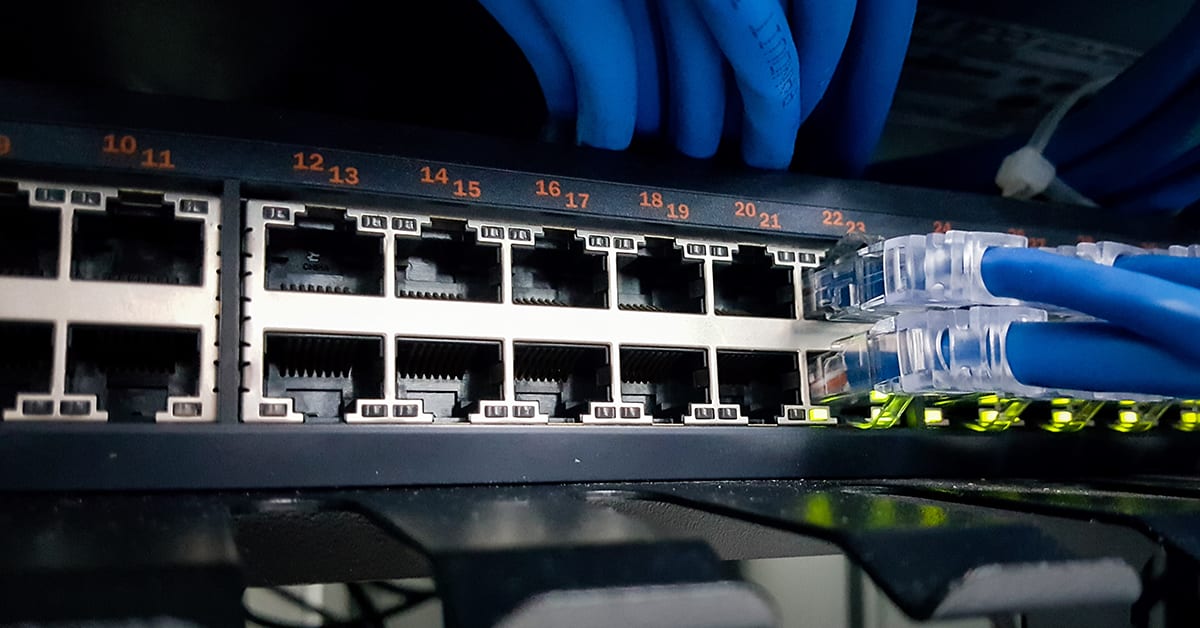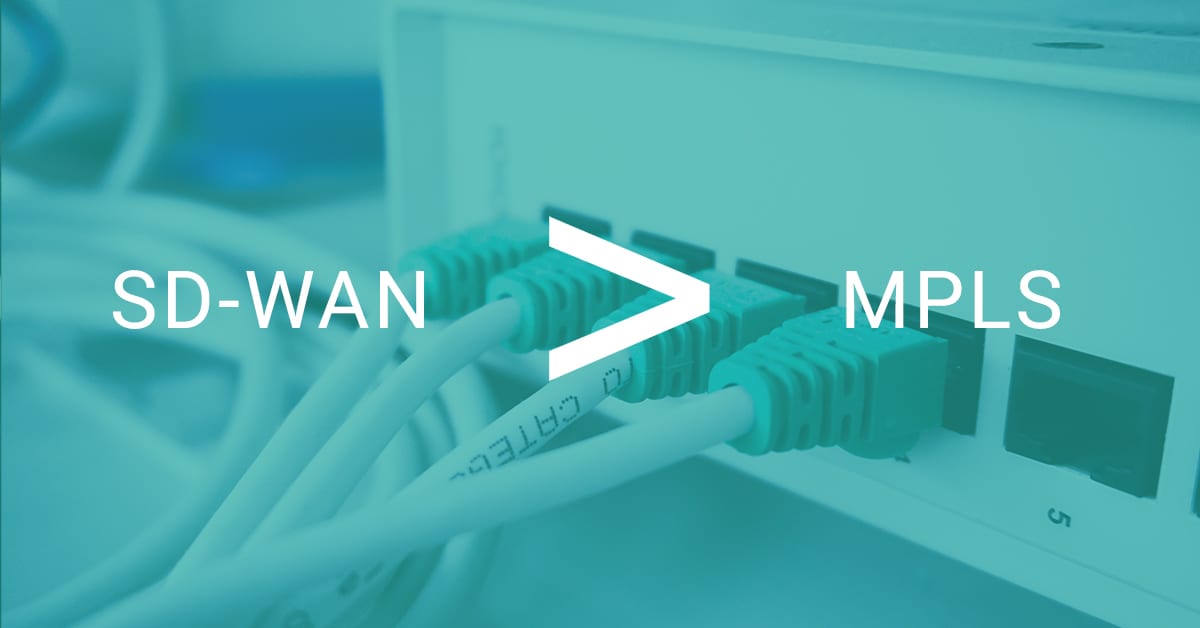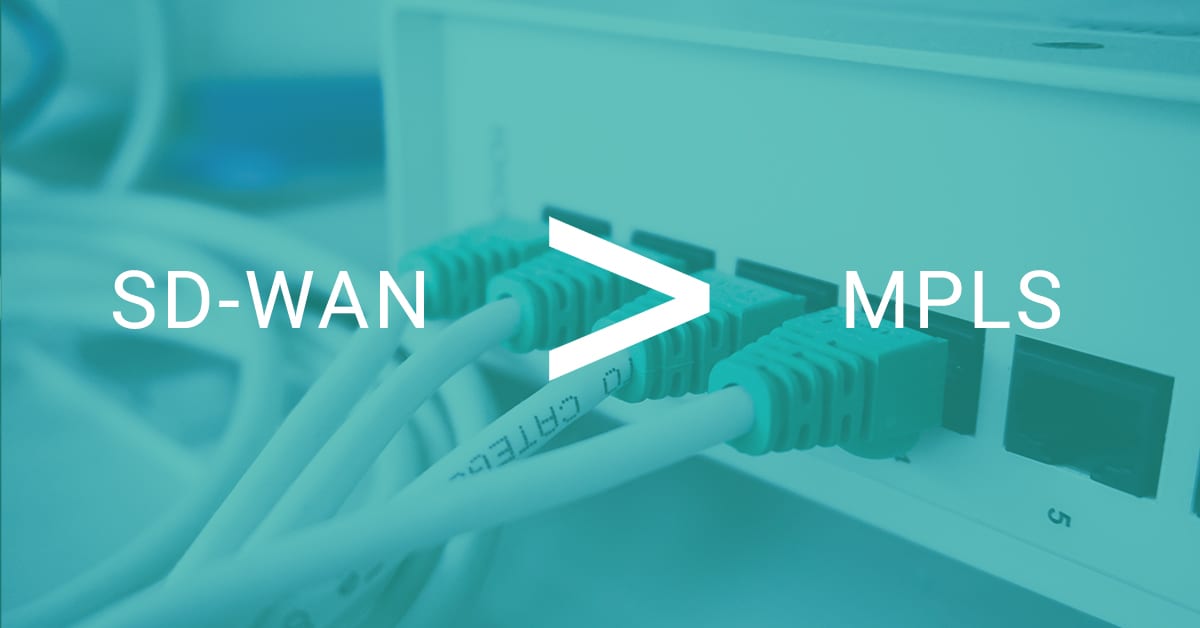SD-WAN and its importance
There is much noise in the world of networking about the potential of Software-Defined Wide Area Networks, or SD-WANs. Corporate network managers are always searching for ways to optimise WAN design while keeping optimum performance, especially when faced with growing bandwidth demands and restricted network budgets. SD-WAN is predicted to run the table of everyone’s purchase and networking deployment worldwide over the next five years. But is SD-WAN much better than MPLS? It is both simple and complex, and the answer all depends on your requirement.

What is SD-WAN?
Software Defined Wireless Area Networks, or SD-WAN is software-defined networking technology that runs on WAN connections. It includes broadband Internet, 4G, LTE, or MPLS. It is used to connect networks run by enterprises; branch offices and data centres, for example, over vast, remote distances.
A WAN is often used to connect remote branches to their main central corporate networks, or data centres that are distances apart. WAN connections traditionally used specific proprietary hardware. SD-WAN, on the other hand, uses cloud-based private systems or the Internet. With SD-WAN, the traffic management and monitoring functions detach from the hardware and the network from the management plane. The four central components that it relies on are:
- Edge Connectivity Abstraction
- WAN Virtualisation
- Policy-driven, centralised management
- Elastic traffic management
What is MPLS?
Multi-protocol label switching (MPLS) is more of a technique than a service. When one sends information over the Internet, an Internet router receives the information. The packet carries no information except the destination IP address. The router sends the packet to different routers. Each individually decides where to send the package next by using complex routing tables. This whole process is repeated form router to router until the packet reaches its destination. You can imagine that this process results in poor performance, specifically for time-sensitive applications like video-conferencing or voice over IP (VOIP).
MPLS addresses this problem by establishing pre-set, well-organised routes for the information. When a packet enters the network for the first time, it is assigned a specific forwarding equivalence class (FEC) – a label that is attached to the package.
Each router in the network is pre-programmed with tables that indicate how to handle each packet with a specific FEC type, resulting in routers not having to do packet analysis. Instead, routers use the labels as an index into a table that provides them with a new FEC for that packet.
MPLS networks handle packets with particular characteristics consistently as it maps packages that come from specific ports or carry traffic like voice or video to low latency routes across the network. Something that is traditionally difficult to do with conventional routing.
The key to MPLS is that these labels are a way to attach additional information to each packet of information, over and above what the routers previously had.
The Pros of SD-WAN

SD-WAN promises to impact the whole enterprise networking ecosystem drastically. With SD-LAN, you erase the problem of geography. Visibility, scalability, performance and control is enhanced, and you have the added benefit that SD-LAN does not carry bandwidth penalties. The benefit for customers is that they can add new links without making changes to the infrastructure or network.
On a positive note, if your company runs the majority of traffic on your company’s WAN for email, file sharing, and software, SD-WAN will have you jumping for joy. SD-WAN outperforms MPLS if you operate primarily from the cloud. Here are some of the benefits of SD-WAN:
- Increased bandwidth – by utilising multiple, high-bandwidth, inexpensive Internet connections simultaneously your company will experience fast Internet speed at low cost
- Improved performance – SD-WAN throttles low-priority traffic on the fly and will always send your traffic via the quickest route
- Increased uptime
- Increased production of small, remote or international sites
- Freedom from the clutches of your ISP
One of its most significant benefits is the flexibility of SD-WAN. You can mix and match network links according to content types or priority. Added to that, the cost of Internet Broadband, 4G and LTE are cheaper than MPLS, so you can choose to use those links for certain types of lower-priority traffic.
Add to that the benefit of added security and you have a winner. Currently, companies prefer network architectures that integrate security, policy and orchestration. SD-WAN offers all of these by unifying secure connectivity. The company benefits from end-to-end encryption across the entire network, and that includes the Internet as well. All devices and endpoints are thoroughly authentic through the use of key-exchange functionality and software-defined security.
The Pros of MPLS
Remember that an essential aspect of MPLS is that it delivers packets reliably. It offers excellent quality of service when you look at packet loss and keeps the most crucial traffic flowing. Its reliability is especially important to maintain real-time protocols, like Voice over IP (VOIP).
MPLS essentially isolates packets of information, meaning that MPLS providers can assign priorities to specific network traffic. It gives companies a sense of control and a feeling of traffic predictability in the network because network paths are pre-determined and packets travel along the paths to which they are assigned.
The Cons of SD-WAN
SD-WANs are great for accessing cloud-based applications. However, they do not provide any on-site functionality. SD-WANs are mostly DIY operations, which means your IT department is responsible for the planning, design, implementation and maintenance of the network. Companies who want to utilise this technology must ensure that there is competent permanent staff to perform these tasks. If you do not make provision for this, you might have to bring in resources from outside the company to fix anything that goes wrong. Alternatively, a technology partner like CCNA can provide a one-stop-shop for all your networking needs.
Companies that run real-time applications like phone calls, video conferencing or remote desktops from the cloud might not benefit from SD-WAN, at least for this kind of traffic. SD-WAN uses the public internet to connect your sites. That means you will not be able to guarantee low levels of packet loss, latency and jitters: the killers of real-time application.
The Cons of MPLS
The biggest downside to MPLS is the cost of bandwidth. Modern consumers use devices and applications that are bandwidth heavy like multimedia content. Video and augmented reality (AR), as well as virtual reality (VR), are good examples. The higher per-megabit cost of MPLS can put it out of reach.
Another downside to MPLS is that it does not offer built-in data protection. If one implements it incorrectly, it can open the network up to vulnerabilities.
When is SD-WAN better than MPLS?

SD-WAN delivers better performance and scalability. Businesses today are more reliant on network connectivity than ever before. Their connectivity to the cloud for email, payroll applications and even VOIP phone systems requires fast, reliable Internet. Traditional network architecture like Metro Ethernet, Multiprotocol Label Switching (MPLS), and VPN tunnels over the Internet can be challenging and expensive to build. SD-WANs, on the other hand, offer cost effectiveness, speed, reliability, and they can easily be scaled.
SD-WAN is more cost-effective than MPLS
SD-WAN uses smart routing over multiple connections so it can choose to route less sensitive, lower priority data over cheaper public lines, and more critical data over reliable private connections. SD-WAN also requires less infrastructure to support by replacing multiple devices (firewalls, routers and WAN path optimisers and controllers) with a single virtual system. A great plus is that one can build firewall capabilities into SD-WAN, which gives you much more value for your money. The worth of this is especially true if you are a business that maintains dedicated firewalls. Research suggests that SD-WAN will be a third of the cost of traditional deployments.
ISPs often carry a premium for high-speed connections that support business operations, especially when the sites are in rural areas. With SD-WAN, you can purchase multiple, more affordable connections and bundle them together.
SD-WAN is more resilient
Businesses that are moving to the cloud benefit from the increased reliability and backup connectivity for business-critical applications while using SD-WAN. Companies usually have two or three different Internet connections supporting each site to ensure that if one link fails, they can switch to another one. SD-WAN dynamically routes traffic when this happens.
SD-WAN is easy to use, scale, configure and maintain
SD-WAN uses a software management console that is easy to manage and scale. It uses one system that combines the functionality of multiple legacy systems, which means businesses do not have to do maintenance and management tasks. With SD-WAN, you can even use a cloud configuration to perform automatic configuration that includes downloading policy, cryptographic certificates and keys as well as automating traffic pattern mapping.
Traditional WAN architecture requires manual configuration and an on-site technician while SD-LAN can be managed centrally through a GUI. New technologies like VOIP is supported easily and automatically, without extensive manual configuration or on-site support.
Visibility – SD-WAN provides a single window into network activity
SD-WANs provide granular visibility into the entire network from one system, unlike firewalls and router set-ups that support WAN implementations can be challenging to parse. They often do not offer much detail on the traffic they are routing.
Security – SD-WAN adds additional layers of security to WAN architectures
WAN architecture can carry a security risk because it does not have built-in data protection. Misconfigurations can expose networks to external attackers. Businesses moving to SD-WAN can partner with a Managed Security Service Provider (MSSP) like CCNA to secure their network to perform security infrastructure management; threat monitoring and response as well as vulnerability lifecycle management.
When is MPLS better than SD-WAN?

Outsourced rooting
With MPLS the carrier handles WAN routing. It means users don’t have to – it makes MPLS much more straightforward than managing an extensive network – resulting in fewer WAN/router engineers on staff
Any-to-any connectivity
Voice and video feature any-to-any traffic. MPLS makes it easier to interconnect sites to each other for this kind of traffic.
Built-in support for Quality of Service (QoS)
MPLS services typically features multiple layers of QoS where users can specify latency, jitter and packet loss thresholds for each type of traffic (voice, video, email, bulk file transfers etc.) The MPLS network can treat latency-sensitive traffic preferentially over less sensitive traffic.
Service-level agreements (SLA’s) with delivery guarantees
Like most commercial services, MPLS comes with warranties from the carrier. Consumer Internet services, on the other hand, typically offer a best-effort scenario.
MPLS is best suited where data centres connect to branch offices, or branches connect.
SD-WAN or MPLS?
The benefits of SD-WAN are extensive, from cost to agility/flexibility, ease of use and increased security. However, private-based networking like MPLS will always be in demand, especially in businesses with specific connectivity requirements. Looking at the pros and cons will help you decide which needs are paramount for your environment.
How CCNA can help with your SD-WAN and MPLS needs
CCNA provides leading technology solutions and services to the Australian Enterprise, Government and Carrier industries. We specialise in innovative design, development and implementation of converged communication network applications. Our approach is to provide our customers with flexible outcome-driven roadmaps for their technology needs. Although we are carrier-independent, we work closely with several carriers and can bundle their offerings into a managed solution. Our team has years of experience in deploying enterprise-wide network solutions and we offer a full suite of network-based products and services that include switches, routers, wireless networks, WAN Accelerators and Optimisers, VPNs and Firewalls.
To learn more about how CCNA can assist you in leveraging SD-WAN in your organisation, visit our Converged Networks services page.


